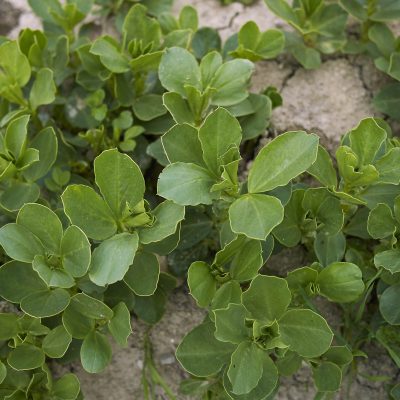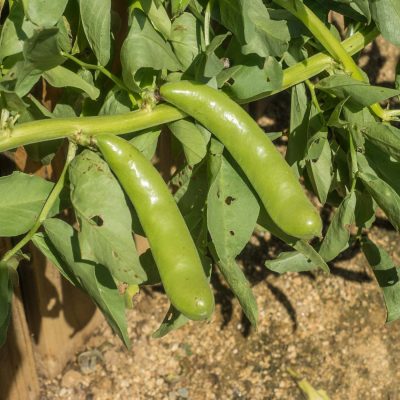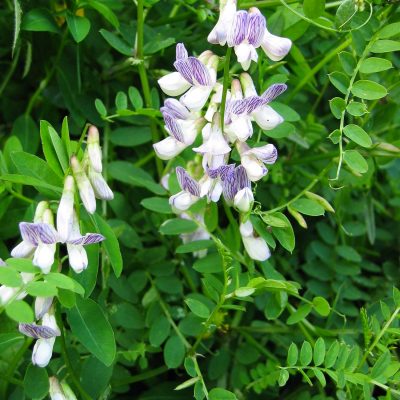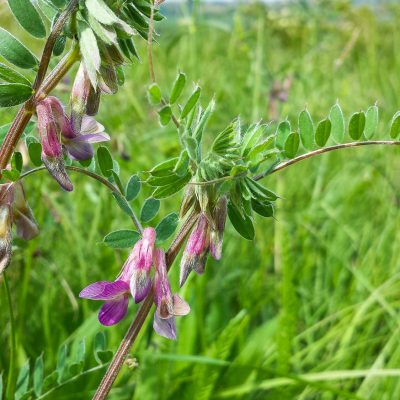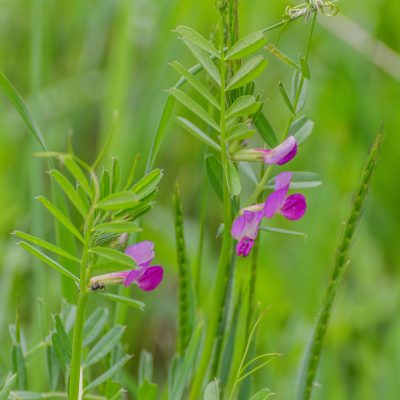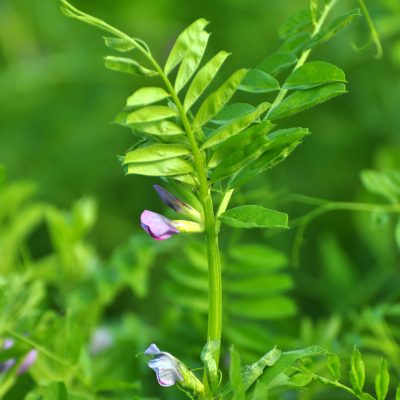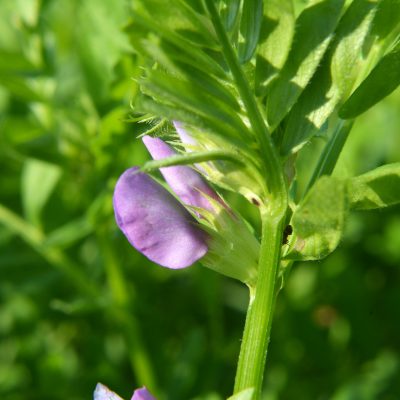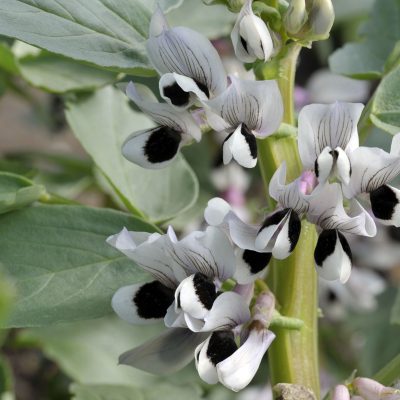
DiVicia (2020-2023) is a project funded by PRIMA (Partnership for Research and Innovation in the Mediterranean Area. It is coordinated by ESA, France and aims at restoring agrodiversity by revalorizing faba bean and vetches in Mediterranean cropping systems
The context
Intensive agricultural systems and low crop diversity in the Mediterranean Basin
Intensive agricultural systems are often characterized by low crop diversity (specific and genetic)
associated with a large use of chemical inputs. They are widely questioned for their negative impacts on soils and environment and their lack of resilience (Altieri et al. 2015). In contrast, crop diversified cropping systems (CSs) have the potentialities to improve productivity, resilience capacity and ecological sustainability, especially in the Mediterranean Basin characterized by arid and semi-arid climates. Rich agricultural traditions and high biodiversity would be fully used for the transition towards sustainable food systems. The loss of traditional crop species and variety diversity contributes to the decline of provisioning, regulating, and cultural ecosystem services (ESs) (Duru et al. 2015), as well as the damage caused to soil quality.
Divicia will implement :
Biodiversity-based agriculture refers to a strong ecological modernization of agriculture based on an ecocentric approach (Hill 1998) relying on high biological diversification of farming systems (Kremen et al. 2012) and intensification of ecological interactions between biophysical system components promoting fertility, productivity and resilience (e.g. Duru et al. 2015). Despite the role of biodiversity in ES delivery remains not fully understood, high spatiotemporal biodiversity from the field to the landscape level has been shown to provide resilience of the systems in changing environments (Quijas et al. 2010).
Although the landscape level must not be neglected, crop diversification at the farm and CS, often mentioned as ‘agroecological practices’, strongly contributes to the valorisation of ecological processes and ESs in considering them as fundamental elements for crop production (Wezel et al. 2014). In CCS, previous and cumulative effects of succeeding crops within the rotation affect the quality of soil organic matter, structural stability, nutrient cycling, weeds and pests control (e.g. Duru et al. 2015). Designing diversified rotation crops with plants mixtures well adapted to the local context would result in functional complementarity, facilitation, and synergisms between species and genotypes in time and space. Together with the implementation of low‐input agronomic practices, crop diversification is highlighted as a key issue for future sustainable development of agroecosystems valorising natural and cultivated biodiversity for agricultural purposes (Kremen and Miles 2012, Stagnari et al. 2017, Duru et al. 2015).
Thanks to SNF and N rhizodeposition (Fustec et al. 2010), the introduction of legumes in Mediterranean CCSs either in sole crop in rotations, or within complex crop communities is of major interest, as they provide proteins for food and feed, enhance nutrient efficiency of agroecosystems (Hinsinger et al. 2011), and beneficial biotic processes. As legumes are able to provide nutrients to other organisms, they boost multi-trophic interactions (Einsenhauer 2012) and play a multi-functional role, enhancing ESs provided by biodiversity-based CSs: they improve N-C-P cycles coupling, limit erosion, help to cope with resource scarcity and sudden stresses, mitigate volatility of input costs,
increase resilience. Inter- and mix-cropping with legumes are recognized to better use natural abiotic resources such as water and nitrogen than sole crops, mainly in low-input cropping systems (Malézieux et al. 2009, Gaba et al. 2015, Brooker et al. 2016, Bédoussac et al. 2015). They also help reduce weeds and soil-borne diseases and pests, and provide environmental benefits (Corre-Hellou et al. 2011, Ehrmann and Ritz 2014).
The introduction of alleles conferring host plant resistance and abiotic stress adaptation and high yields potential would enhance crop improvement, sustainability and resilience of Mediterranean diversified CCSs. Access to local and adapted varieties is critical for resilient agroecosystems especially under current global change (Ficiciyan et al. 2018). Elite cultivars and landraces harbour useful genetic variation that needs to be more easily utilized in plant breeding (Dwivedi et al. 2016). Further mechanistic understanding, selection and breeding of drought-adapted crops are required to improve the productivity and economic benefits of such systems and their adoption by rural actors.
Soil biodiversity contribution to ESs is now widely recognized, impacting plant productivity, water and air quality (Doran and Zeiss 2000). Soil organisms respond sensitively to land management practices and climate, with good correlation with ecosystem functions including water storage, C N P and other nutrients cycling, protection from pollutions and pathogenic organisms. Comprehensible and unexpensive indicators of soil quality are necessary for farmers to evaluate agronomic practices and help the transition toward sustainability and resilience of the systems.
Most farmers have to face lock‐ins regarding crop diversification: lack of references (new crops, new management practices), of adapted varieties, of technical solutions, of guidelines to combine species in time and space, uncertainty in economic performance and lack of adapted downstream value chains for crop diversification products (Magrini et al. 2016). To enhance the development and adoption of these approaches in the Mediterranean Basin, better networking and engagement of the different actors is needed (Migliorini et al. 2018, FAO 2018). The participatory approach is now widely recognised as a basic operational principle for sustainable development. Also, DiVicia will actively collaborate with farmers and other stakeholders to collect tacit knowledge, perform participatory CCSs
evaluations and transfer scientific knowledge. Overall, for supporting the transition toward sustainable and resilient biodiversity-based CCSs matching with future challenge in the Mediterranean Basin.

DiVicia focuses on faba bean (V. faba) and vetch (V. sativa), as case study. The Mediterranean Basin is one of the regions where faba bean (grain) and vetches (forage) were historically cultivated in traditional CCSs and used for food and feed (Ruisi et al. 2017). From the 60’s, and with the increasing use of mineral N fertilizers, cultivation of faba bean drastically dropped in Southern Europe, but remained stable in North Africa (between 350 and 550 Mha) and in West Asian countries (around 50 Mha). Vetches were also neglected with the change of land use, thought they exhibit a high adaptability to grow where food legumes are not suitable and would have an increasing role for forage
and feed, as animal protein becomes scarcer and expensive (Stagnari et al. 2017).. Both species produce extrafloral nectar that may improve biological control against insect pests within the field or field margins by attracting and feeding natural enemies (Jamont et al. 2014). Conversely, they show contrasting traits (root and shoot architecture, N and C allocation and acquisition, fibre composition…) giving them different potential agroecological functions (Lorin et al. 2016) in biodiversity-based CCSs. Close drought-tolerant Vicia species such as V. narbonensis and V. articulata will be also be proposed for introduction in the CCSs.
Aims and objectives
Promote knowledge exchange and build up a participatory approach
Promote knowledge exchange between farmers, other stakeholders and researchers, and participatory activities,
Offer an unprecedented collection of diverse and resilient Vicia spp.
Combine innovations in crop diversification practices
Combine innovations in crop diversification practices with well characterized, interesting and diverse new local and drought-adapted Vicia spp. genotypes, and mesure their impact on crop performances and soil fertility.
Use and adapt assessment tools and diagnoses
Use and adapt assessment tools and diagnoses to evaluate and predict the effect of the proposed practices on the sustainability of biodiversity-based Mediterranean CCSs,
Provide new tools for farmers
- To better manage and predict the effect of agronomic practices on the soil fertility (C and N cycles and organic matter quality),
- To assess the sustainability of the system and
- To predict the economic benefits of sustainable practices at the farm scale, as economic actors are also essential to achieve the transition (FAO 2018),
Develop excellence training programs for young scientists
Develop excellence training programs for young scientists in order to pursue and promote this approach, as researchers also play an important role in the development of agroecological practices (FAO 2018).


